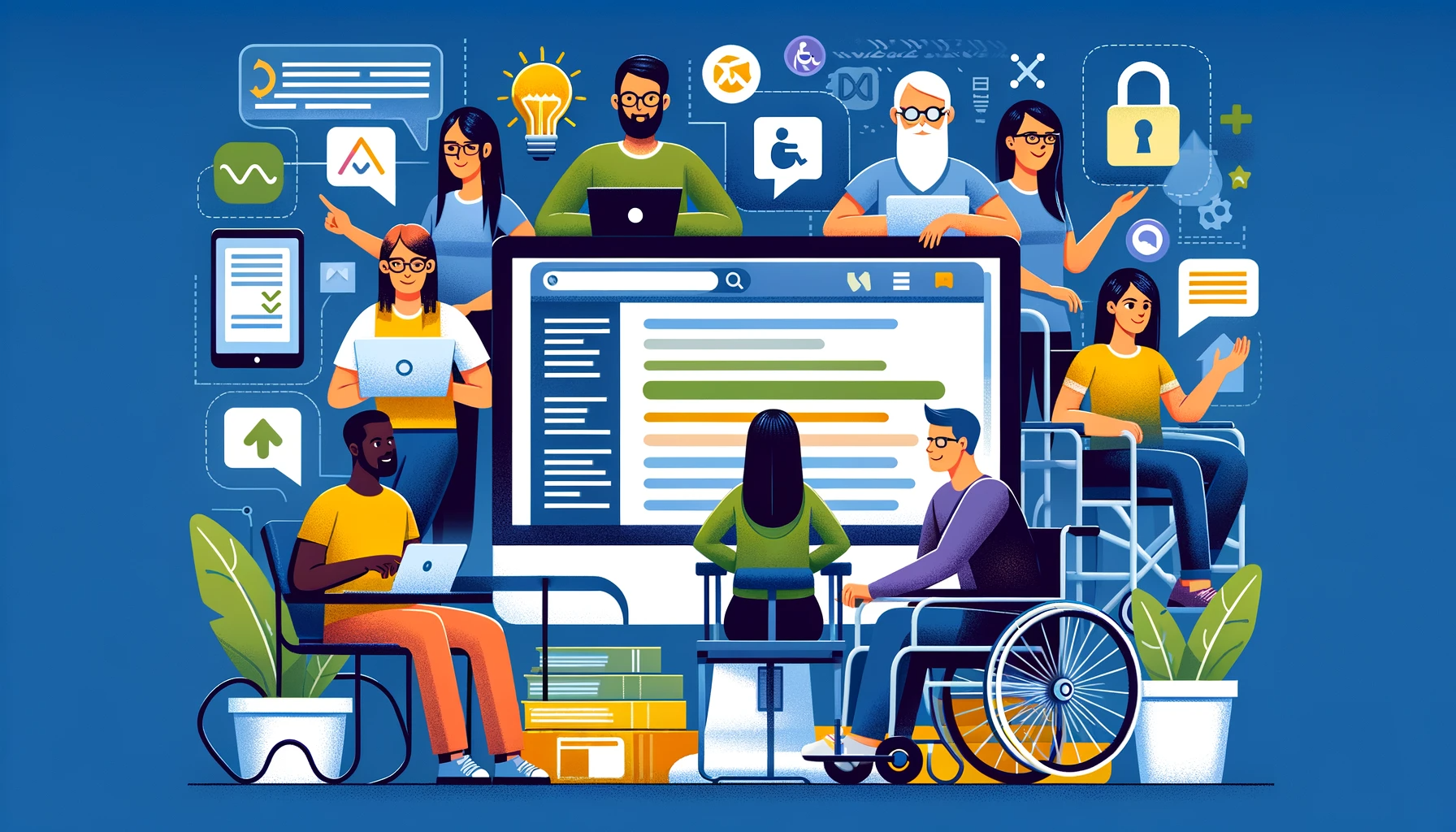Let's Talk About Web Accessibility: It's Not About Edge Cases, It's About Humans
 Dev Shekhawat
Dev Shekhawat
Here's a truth bomb: Every time someone says "we'll add accessibility later," they're really saying "we don't want these users now." Harsh? Maybe. True? Absolutely. Let's talk about why accessibility isn't just a checkbox on your QA list – it's your website's heartbeat.
The Reality Check
Before you dismiss this as another preachy tech article, let's look at some numbers that might shift your perspective:
Over 1 billion people worldwide experience some form of disability
1 in 12 men have color blindness
466 million people have disabling hearing loss
2.2 billion people have vision impairment
1 in 4 US adults have a temporary or permanent disability
Still think accessibility is about "edge cases"?
The Temporary Ability Myth
Here's the plot twist many developers don't see coming: You're temporarily able-bodied. Think about it:
Ever watched a video on mute while your partner is sleeping? That's a temporary auditory limitation.
Tried to use your phone with a cracked screen? Visual impairment simulation.
Scrolled through a site while holding a sleeping baby? That's temporary motor limitation.
Attempted to read documentation while sleep-deprived? Cognitive limitation right there.
Accessibility isn't about "them" – it's about all of us, just at different times in our lives.
The Real-World Implementation Guide
1. Make Your Site Keyboard-Friendly
Your beautiful site should work without a mouse. Period.
/* Don't just remove focus styles - enhance them */
:focus {
outline: 3px solid #4CAF50;
outline-offset: 2px;
box-shadow: 0 0 0 3px rgba(76, 175, 80, 0.3);
}
/* Add hover states that work for both mouse and keyboard */
.interactive-element {
transition: transform 0.2s ease;
}
.interactive-element:hover,
.interactive-element:focus {
transform: translateY(-2px);
}
2. Embrace Semantic HTML Like Your Life Depends On It
Because someone's experience literally might.
<!-- This is not semantic. This is div soup -->
<div class="header">
<div class="nav">
<div class="nav-item">Home</div>
</div>
</div>
<!-- This is semantic HTML - clear, meaningful, accessible -->
<header>
<nav aria-label="Main navigation">
<ul>
<li><a href="/" aria-current="page">Home</a></li>
</ul>
</nav>
</header>
3. Make Your Forms Human-Friendly
Forms are like conversations. Don't make them awkward.
<!-- Form from hell -->
<div>
<input type="text" placeholder="Name" />
<div class="error" style="color: red;">Invalid input!</div>
</div>
<!-- Form from heaven -->
<div class="form-group">
<label for="name">Full Name</label>
<input
type="text"
id="name"
aria-describedby="name-hint name-error"
aria-invalid="false"
/>
<span id="name-hint" class="text-sm">
As it appears on your official documents
</span>
<div
id="name-error"
class="error-message"
role="alert"
hidden
>
Please enter your full name
</div>
</div>
4. Color Contrast: Not Just for Show
Your gray-on-lighter-gray aesthetic is making both designers and users cry.
/* Design crime */
.subtle-text {
color: #999; /* contrast ratio: 2.5:1 😱 */
background: #fff;
}
/* Design excellence */
.readable-text {
color: #595959; /* contrast ratio: 7:1 ✨ */
background: #fff;
}
5. Images That Speak Volumes
Every image tells a story. Make sure screen readers can tell it too.
<!-- Silent story -->
<img src="team-photo.jpg" alt="team" />
<!-- Eloquent description -->
<img
src="team-photo.jpg"
alt="Diverse team of developers collaborating at a whiteboard during our weekly hackathon"
loading="lazy"
/>
<!-- Decorative images should be silent -->
<img
src="divider.svg"
alt=""
role="presentation"
/>
The Business Case (Because Sometimes That's What It Takes)
Still need to convince your boss? Here's your ammo:
Legal Requirements: ADA lawsuits against websites are increasing yearly
Market Size: You're excluding 15-20% of potential customers
SEO Benefits: Accessible sites often rank better
Mobile Optimization: Accessibility practices improve mobile UX
Brand Reputation: Inclusive design = positive brand perception
The Way Forward
Here's your accessibility starter pack:
Run a Lighthouse audit today
Install WAVE or axe DevTools
Try navigating your site with keyboard only
Test with a screen reader
Check your color contrasts
The Final Truth
Accessibility isn't:
Extra work
Design limitations
"Nice to have"
For edge cases
Accessibility is:
Good business
Better UX
Legal requirement
Basic human right
Your next user might:
Not see colors like you do
Navigate by keyboard only
Use a screen reader
Need larger text
Have a slow connection
But they all have one thing in common: They deserve to use your site.
The Call to Action
Start small, but start today. Test one feature. Fix one contrast issue. Add one ARIA label. Small steps lead to accessible experiences, and accessible experiences lead to a better web for everyone.
Remember: The most beautiful website is the one everyone can use. Your perfect color palette means nothing if users bounce. Your slick animations are worthless if they trigger vertigo.
Build like everyone's watching. Because they are. Just not all with their eyes.
Want to dive deeper? Check out:
Subscribe to my newsletter
Read articles from Dev Shekhawat directly inside your inbox. Subscribe to the newsletter, and don't miss out.
Written by
